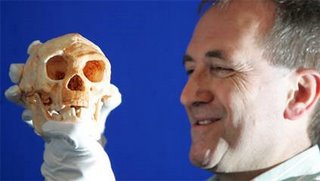Hobbits are People Too

By Ker Than
LiveScience staff writer
New computerized casts of abnormally small Homo sapiens brains are reigniting the debate over the skeletal remains nicknamed "The Hobbit."
Ever since the 18,000-year-old remains of the three-foot-tall adult female hominid were unearthed in 2003 on the remote Indonesian island of Flores, scientists have argued whether the specimen was a human with an abnormally small head or represents a new species in the human family tree. The diminutive creature had a brain approximately one-third the size of modern adult humans.
Some scientists named the specimen Homo floresiensis, a dwarfed offshoot of Homo erectus, a human ancestor that lived as far back as 1.8 million years ago.
In the latest study, the evidence supports the claim of a new species. A team of scientists led by Dean Falk, a paleoneurologist at Florida State University, compared computer-generated three-dimensional reconstructions, called "endocasts," of brains from nine microcephalic modern humans with those of 10 normal modern-human brains.
"We asked, ‘Is there anything other than size of the brain that separates these two groups?'" Falk said.
According to the researchers, the answer is "yes." They found that two ratios, created using different skull measurements, could be used to accurately distinguish the normal humans from the microcephalics nearly 100 percent of the time.


0 Comments:
Post a Comment
<< Home